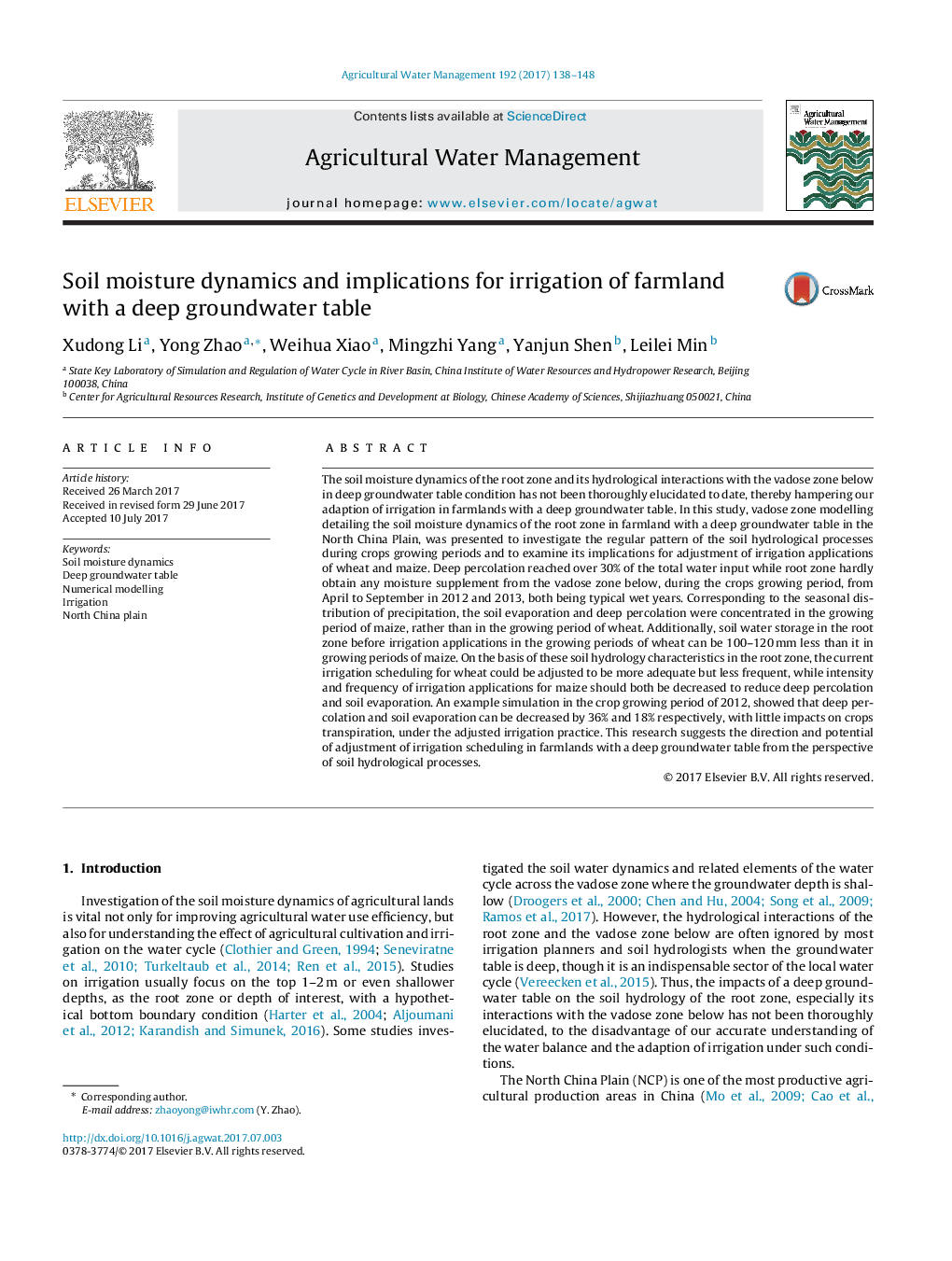| Article ID | Journal | Published Year | Pages | File Type |
|---|---|---|---|---|
| 5758424 | Agricultural Water Management | 2017 | 11 Pages |
Abstract
The soil moisture dynamics of the root zone and its hydrological interactions with the vadose zone below in deep groundwater table condition has not been thoroughly elucidated to date, thereby hampering our adaption of irrigation in farmlands with a deep groundwater table. In this study, vadose zone modelling detailing the soil moisture dynamics of the root zone in farmland with a deep groundwater table in the North China Plain, was presented to investigate the regular pattern of the soil hydrological processes during crops growing periods and to examine its implications for adjustment of irrigation applications of wheat and maize. Deep percolation reached over 30% of the total water input while root zone hardly obtain any moisture supplement from the vadose zone below, during the crops growing period, from April to September in 2012 and 2013, both being typical wet years. Corresponding to the seasonal distribution of precipitation, the soil evaporation and deep percolation were concentrated in the growing period of maize, rather than in the growing period of wheat. Additionally, soil water storage in the root zone before irrigation applications in the growing periods of wheat can be 100-120Â mm less than it in growing periods of maize. On the basis of these soil hydrology characteristics in the root zone, the current irrigation scheduling for wheat could be adjusted to be more adequate but less frequent, while intensity and frequency of irrigation applications for maize should both be decreased to reduce deep percolation and soil evaporation. An example simulation in the crop growing period of 2012, showed that deep percolation and soil evaporation can be decreased by 36% and 18% respectively, with little impacts on crops transpiration, under the adjusted irrigation practice. This research suggests the direction and potential of adjustment of irrigation scheduling in farmlands with a deep groundwater table from the perspective of soil hydrological processes.
Related Topics
Life Sciences
Agricultural and Biological Sciences
Agronomy and Crop Science
Authors
Xudong Li, Yong Zhao, Weihua Xiao, Mingzhi Yang, Yanjun Shen, Leilei Min,
